|
Additional Lessons |
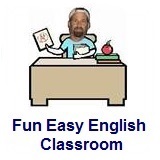 About These
Lessons About These
Lessons
The following classroom lessons are great for students
who want additional listening and reading practice. |
-
Travel America -
Beginner
Level. Do you love America and American
English? Learn before you travel. Facts and other
cool stuff about your favorite U.S. state. Great
English reading practice.
|
 Travel
America - Ohio Travel
America - Ohio
(Beginner -
Reading)
Learn some interesting facts and read interesting
stories about Ohio. |
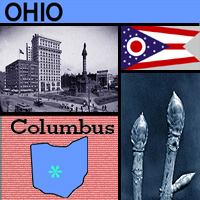 Ohio Ohio
The land we call Ohio today was part the Northwest
Territory that the United States won by defeating
the British in the Revolutionary War. Ohio was
admitted into the Union as the 17th state in 1803.
The state gets its name from the river that forms
its southern border. Ohio is an Iroquois word
meaning "great water." The capital of the "Buckeye
State" is Columbus, and, not surprisingly, the state
tree is the buckeye. Highly populated, Ohio is
situated between the Eastern Seaboard and the
Midwest, and is known for the fact that eight
presidents were either born or lived there. The
flower is the scarlet carnation. |
Ohio
State Flag
The Ohio state flag has a unique swallowtail design
which is more correctly called a burgee (pronounced bûr’je)
rather than a "flag" or "banner." All other state flags have
a square or rectangular shape.
The Ohio flag was designed by John Eisemann and officially
adopted in 1902. The blue triangular field represents Ohio’s
hills and valleys. It contains seventeen white stars -
thirteen stars surrounding the circle are symbols of the
original thirteen colonies. Four stars at the apex of the
triangle raise the total number of stars to seventeen (Ohio
was the 17th state to enter the Union in 1803).
The red and white stripes represent the roads and waterways
of the state. The white circle with a red center forms an
"O" for "Ohio" and is also related to Ohio's nickname (The
Buckeye State). |
|
Source:
State Symbols USA |
|
|
 Ohio
State Facts Ohio
State Facts
Picture: state seal of Ohio |
|
State Capital |
Columbus |
|
Nickname |
Buckeye State |
|
Motto |
With God, All Things are Possible. |
|
Statehood |
March 1, 1803 (17th) |
|
Origin of Name |
From the Iroquois Indian word for "good river." |
|
Largest Cities |
Columbus, Cleveland, Cincinnati, Toledo, Akron |
|
Border States |
Indiana, Kentucky, Michigan, Pennsylvania, West
Virginia |
|
Area |
40,953 sq. mi., 35th largest |
|
State Bird |
Cardinal |
|
State Flower |
Scarlet Carnation (dianthus caryophyllus) |
|
State Tree |
Buckeye (aesculus glabra) |
|
State Song |
Beautiful Ohio |
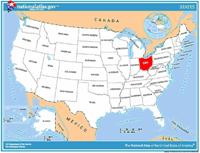 Travel and
tourism site for Ohio - This state travel and
territorial tourism site provides ideas for your vacations,
meetings, and more. Travel and
tourism site for Ohio - This state travel and
territorial tourism site provides ideas for your vacations,
meetings, and more. |
|
|
Ohio Stories |
|
|
Historic Sauder Village
If you want to travel back in time and see what settlers in the
1830s looked like and how they lived, then you should visit Historic
Sauder Village in Ohio. Complete with people dressed in period
clothing and authentically restored buildings, Sauder Village was
the idea of local farm boy Erie J. Sauder, founder of the Sauder
Woodworking Company in 1934.
Sauder was inspired to create this village by his relatives, who had
helped settle Ohio's Great Black Swamp. Although Ohio became a state
in 1803, few European settlers considered entering the damp,
forested wilderness of northwestern Ohio, known as the Great Black
Swamp, until the 1830s. It was then that people from the Mennonite
and Amish religions decided to move to this region to start a new
life away from the religious persecution in their European homeland.
For years the Amish and the Mennonites, along with other settlers,
worked, digging ditches and clearing away trees, until they had
drained the Great Black Swamp and turned it into the state's best
farmland.
Today, Sauder Village is a nonprofit living history museum and
educational complex, with more than 30 buildings that show how life
was in rural Ohio during the 19th century. Artisans in 11 craft
shops demonstrate trades of that period: glassblowing, pottery
making, spinning and weaving, broom making, woodworking, basket
making, printing, and quilting. |
|
|
Little Brown Jug Harness Race
Have you ever seen a horse race? How about a harness race? A harness
race is one in which a horse pulls a light, two-wheeled vehicle
called a sulky. Harness racing developed from the old days when
horses and buggies raced each other on country roads or city
streets.
Basically, there are two major types of horse racing -- riding a
horse with a saddle and harness racing. There are two types of
horses that compete in harness racing: one is the pacing horse,
which moves both legs on one side of its body at the same time, and
the other is the trotting horse, whose left front and right rear leg
move forward at the same time, then right front and left rear leg
move together. Because there are two types of horses, there are two
kinds of harness racing: trotting or pacing.
If you want to see a horse pacing race go to Delaware, Ohio, for the
Little Brown Jug Harness Race, which takes place every year on the
third Thursday after Labor Day. The Little Brown Jug is a race for
three-year-old pacing horses. The first race was held in 1946. Back
then, trotting horses were more popular, but two men in the city
liked pacing horses, so they formed the Little Brown Jug Society and
organized the race. |
|
|
Cleveland Irish Cultural Festival
Have you ever heard of Irish step-dancing? If you have, it's
probably thanks to the high-spirited Irish dance show "Riverdance."
This form of Irish dance was relatively unknown outside of Ireland
until the 1990s, when this show made it popular around the world.
Each summer, the traditions of Ireland are celebrated in Cleveland
at the annual Cleveland Irish Cultural Festival. This celebration of
the region's Irish heritage features the best in Irish entertainment
from Ireland, Canada, and the United States on nine stages. The
girls in this photo are doing a traditional Irish folk dance in
authentic costume. Other highlights include Irish plays, pipe bands,
and an Irish feis.
A feis is an Irish dance competition. There are different types of
Irish dance. In addition to step dancing, there is ceili dancing.
Both dances have fast footwork and kicks, all done while the upper
body is kept rigidly straight. Step dancing emphasizes a close form
and posture with legs kept together, no high kicks, little or no
turning and no traveling. Ceili dancing emphasizes dancing on the
toes, extension of leg and foot, long reach and the quick movements
seen in the step dances. |
|
|
Parade the Circle Celebration
What's that crazy looking animal in the photo? It's a giant puppet
in the Parade the Circle celebration in Cleveland, Ohio. This parade
urges participants to let their imaginations run wild.
Held the second Saturday of June each year in the University Circle
area of Cleveland, this daylong event combines the visual arts,
dance, and music. The parade is created by the Cleveland Museum of
Art and includes giant puppets, dazzling costumes, floats, and
performance ensembles.
Since this parade encourages original, creative ideas, even the
marching bands that perform do not appear in their regular uniforms,
but dress for a particular theme. About 1,500 people take part in
this unique parade. |
|
|
Coal Powered a Revolution
Did you know that coal powered America's Industrial Revolution?
The Industrial Revolution took place in the late 19th century. It
was a period of social and economic change caused by technological
advances and the switch in manufacturing from the work of humans to
machines. This is called mechanization. At this time, coal was
widely used to heat buildings. It was also burned to power steam
engines used in manufacturing and locomotion and to power almost all
of the innovations (new ideas, methods or devices) of the Industrial
Revolution.
This film shows carloads of coal being loaded into vessels at the
Erie Railroad docks in Cleveland, Ohio. Coal is still one of Ohio's
most important mineral resources. In fact, the state's
multibillion-dollar coal industry produced 22.4 million tons in
1999. |
|
|
Dayton, Ohio, Electronic Trolley Bus (ETB)
System
Why are there reindeer on top of that trolley car?
That's the Christmas Trolley in Dayton, Ohio, one of only a few
cities in the United States that still operates an electric trolley
bus system for its mass transportation.
The trolley, invented in Germany in the early 1880s, was called the
"trackless trolley," "trolley coach," "trolley bus" and eventually
the "electric trolley bus." Trolley buses are propelled (moved
forward) by electric motors and receive power from an overhead wire
system. They are full-size buses that run on rubber tires and are
steered just like other buses. They operate almost silently and
produce no smoke or pollution.
In 1888, the White Line Electric Railway began running a route in
downtown Dayton and, by 1910, five separate companies had built
other lines. The trolley remained the primary mode of city
transportation until the early 1930s. After a fire in 1932, the
Dayton Street Rail Road Company replaced its destroyed trolley cars
with electronic trolley buses (ETBs). These ETBs, which began
running on April 23, 1933, continued the trolley legacy in Dayton. |
|
|
Blue Jacket Outdoor Drama
If you were to visit Xenia, Ohio, you could see an outdoor drama
production that shows the Ohio Valley area as it was in the late
1700s, when advancing frontiersmen fought the Shawnee Indians who
wanted the land to remain free of ownership. The Shawnee strongly
believed that the earth was sacred, that they did not own the land,
but simply took care of it. When they died, they believed that they
became a part of it. This belief eventually led to conflict with the
white man.
The drama is about the life of Shawnee Chief Blue Jacket, portrayed
as a white man named Marmaduke Van Swearingen, who was adopted by
the Shawnee Indians. Because of the blue hunting jacket he wore, he
was given the Shawnee name Wey-yah-pih-ehr-sehn-weh, or Blue Jacket.
In the drama, Blue Jacket is attracted to the Indian way of life,
lives his life as a Shawnee, and, together with the other Shawnee
Indians, fought the white man over land. Ultimately, Blue Jacket was
named War Chief of the Shawnee Nation.
Some people doubt the accuracy of the Blue Jacket story, including
family members of Chief Blue Jacket, who say he was a Shawnee
Indian, not a white man.
Can you think of other history stories that people disagree about? |
|
Source:
Library of Congress |
|
 National
Forests, Parks, and Monuments of Ohio National
Forests, Parks, and Monuments of Ohio
The following is a description of national
forests, parks, and monuments in the state
of Ohio. If you plan to visit or live in
Ohio for awhile then you should definitely
plan to visit some of these fantastic
places. |
|
|
|
National Forests |
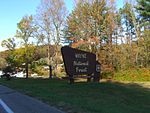 Wayne Wayne
Ohio's only National Forest, Wayne is
located in the Appalachian foothills and has
over 300 mi (480 km) of trails. The North
Country Trail passes through several
sections of the forest. |
|
|
|
National Parks |
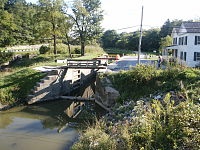 Cuyahoga
Valley Cuyahoga
Valley
This park along the Cuyahoga River has
waterfalls, hills, trails, and exhibits on
early rural living. The Ohio and Erie Canal
Towpath Trail follows the Ohio and Erie
Canal, where mules towed canal boats. The
park has numerous historic homes, bridges,
and structures, and also offers a scenic
train ride. |
|
|
|
National Monuments |
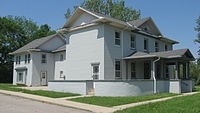 Charles
Young Buffalo Soldiers Charles
Young Buffalo Soldiers
Charles Young was the first African American
to reach the rank of colonel in the US Army.
He was also the first national park
superintendent, of Sequoia and General Grant
National Parks and a professor at
Wilberforce University. His home at
Wilberforce is a museum commemorating his
life. |
|
|
Travel America |
|
|
Cuyahoga Valley National Park
(Beginner - Listening,
reading)
A video lesson which shows you an interesting place in America.
The English is
spoken at 75% of normal speed.
Great English listening and reading practice.
This video is all about Cuyahoga Valley National Park. |
|
 Travel
America Travel
America
Do you love America and American English? Learn before
you travel. Facts and other cool stuff about your
favorite U.S. state. Visit the Fun Easy English Travel
America pages. Read about the beautiful National
Forests, Parks, and Monuments. Great English reading practice. |
 Drive America Drive America
Planning to drive in America? Learn the rules and
regulations. Great English reading practice. |
|